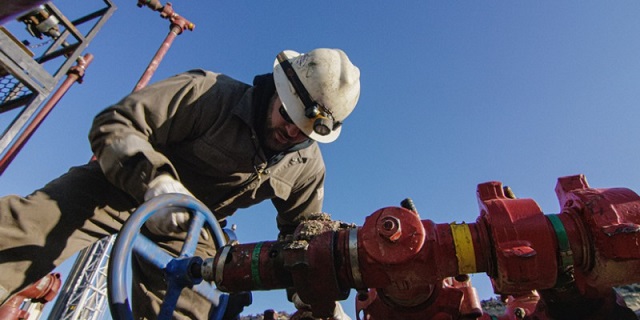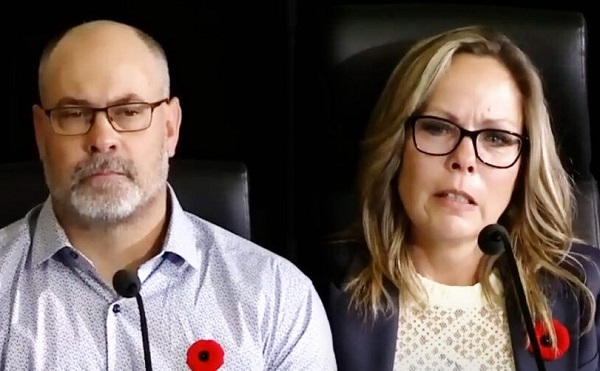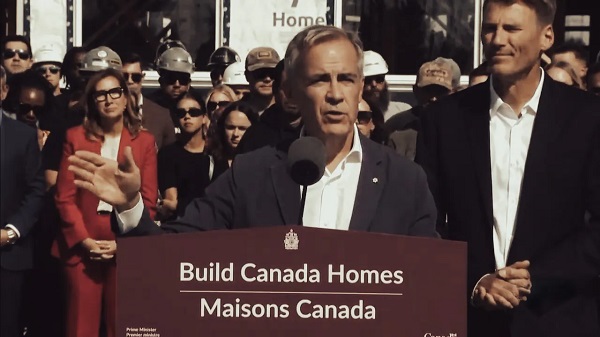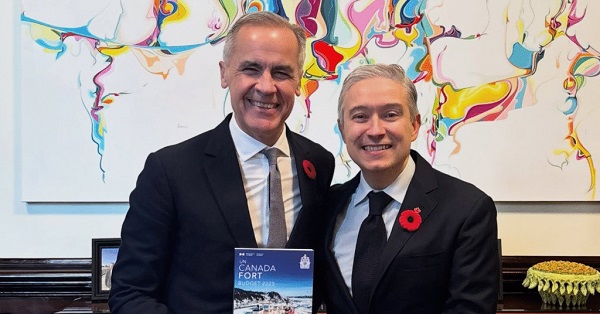Alberta
Alberta reaching out to Canadians to help kill Ottawa’s job-killing cap on energy production

Scrap the Cap |
S&P Global Commodity Insights found that a 40 per cent emissions cap could lead to a reduction in oil and natural gas production of one million barrels per day by 2030 and a 2.1-million barrel reduction by 2035.
Independent analysis by the Conference Board of Canada, Deloitte and S&P Global tell the same story: the federal government’s proposed cap would require oil and gas production cuts that would put people out of work and drain billions from Canada’s economy. Despite these reports and continued opposition from many provinces, industry, businesses, experts and Canadians, the federal government will soon release its draft regulations.
The proposed emissions cap is a production cap. S&P Global Commodity Insights found that a 40 per cent emissions cap could lead to a reduction in oil and natural gas production of one million barrels per day by 2030 and a 2.1-million barrel reduction by 2035. According to the Conference Board of Canada and Deloitte, the cap could amount to a more than 10 per cent reduction in oil production and a 16 per cent reduction in conventional gas production in Alberta in 2030.
Alberta’s government is launching a national advertising campaign to inform Canadians that this cap will lead our province and country into economic and societal decline. Alberta would be hit hardest and in 2040, the province’s GDP would shrink by 4.5 per cent. Canada’s would decline by 1 per cent. The cap would result in 150,000 Canadians losing their jobs and the loss of $14 billion a year from the economy. The average Canadian family would be left with up to $419 less per month to spend on groceries, housing or fuel, impacting the quality of life Canadians enjoy coast to coast to coast.
All Canadians deserve to know the dangers of this cap, which will negatively impact their families without reducing global emissions whatsoever.
“Once again, Ottawa is attempting to set policies that are shortsighted and reckless. We’re challenging proposed policy that would stifle our energy industry, kill jobs and ruin economies by launching a national campaign that tells Ottawa to “Scrap the Cap.” We’re telling the federal government to forget this reckless and extreme idea and get behind Alberta’s leadership by investing in real solutions that cut emissions, not Canada’s prosperity.”
The proposed cap will put safe, reliable and secure energy at risk while costing tens of thousands of jobs and billions in lost federal revenue that pays for important programs, services and infrastructure. This means lost jobs, hurt families shuttered businesses and less revenue going to the schools, hospitals, programs and services every Canadian relies on.
If left unchanged, this cap would force Canada’s energy industry to curtail production at the expense of struggling Canadian families. When production is cut, jobs, tax revenues and the economy are cut too. It is, in effect, a cap on prosperity that would be felt across the country.
Alberta is encouraging Canadians to visit the Scrap the Cap website and tell Ottawa they cannot and will not support a cap on energy production that leaves Canadians with a lower standard of living and reduced services. Print, television and social media advertisements will run nationwide from Oct. 15 to the end of November to urge Canadians to contact their member of parliament (MP) and share their thoughts. The Scrap the Cap website includes a letter that can be sent electronically.
“We will not stand by while the federal government threatens tens of thousands of jobs. This production cap means billions in revenues down the drain, and we will not let our province’s – or our country’s – economic future be gutted by an out-of-touch federal government. There is a way to reduce emissions without killing the economy… but this unconstitutional production cap is not it.”
“A cap on oil and gas production will kill jobs and investment and adds to the growing list of federal programs that will kill investments in decarbonization. All Canadians need to let Ottawa know how this cap hurts Alberta and risks Canada’s energy security.”
Alberta is reducing emissions through common sense, incentives and technologies, not taxes or punitive regulations. The oil sands emissions intensity per barrel has fallen 23 per cent since 2009 and is expected to decline another 28 per cent by 2035. Alberta’s overall emissions, electricity emissions and methane emissions are all declining, even as energy demand rises and the economy grows.
The province aspires to be carbon neutral by 2050 without cutting jobs or compromising affordable, reliable and secure energy for Albertans, Canadians and the world.
Related information
- Scrap the Cap website
- Proposed federal oil and gas emissions cap regulatory framework: Government of Alberta technical submission
- Deloitte: Potential Economic Impact of the Proposed Federal Oil and Gas Emissions Cap
- S&P Global Commodity Insights: Economic Impact Assessment of Canadian Conventional Oil and Gas
- Conference Board of Canada: Economic Impacts of a Greenhouse Gas Emissions Cap on the Oil and Gas Sector
- Alberta’s emissions reduction and energy development plan
Related news
- It’s time to scrap the cap: Joint statement (May 27, 2024)
Alberta
Tell the Province what you think about 120 km/h speed limit on divided highways

Alberta’s government is engaging with Albertans on increasing speed limits on rural highways.
Starting Nov. 7, Albertans can share their views on modernizing speed limits on divided highways through an online survey running until Dec. 12. The survey will ask how Albertans view raising the speed limit by 10 km/h on various highways from 110 km/h to 120 km/h.
“Alberta’s government is investigating how to safely increase speed limits on divided highways, and if Albertans support increasing speed limits. We are investing more than $1.5 billion this year alone to improve highway safety and upgrade infrastructure across the province. We want Albertans to be able to drive the speed limit that the highways are designed for. Modern vehicles combined with public awareness mean we can explore higher speed limits.”
The survey will provide Albertans with the opportunity to provide input on which highways they would prioritize having a speed limit increase, their views on restricting commercial trucks from using the far-left lane on highways with three or more lanes and any other feedback that would improve driving experiences on provincial highways.
Following a review of the survey results, Alberta’s government plans to conduct a mini-trial of a 120 km/h speed limit to assess the impacts of higher speed limits on divided highways. The trial will include strong monitoring to assess driving behaviour.
Alberta’s government reminds motorists to slow down and drive to the conditions. Speed limits are set for ideal conditions. When roads are wet, icy or when there is reduced visibility, motorists should slow down.
Quick facts
- Alberta’s provincial highway network includes more than 64,000 lane kilometres of highways, about 11,700 lane kilometres of which are divided.
- The posted speed limits of Alberta’s divided highways range from 100 to 110 km/h, although the posted speed limits on segments passing through cities, towns and First Nation lands can be as low as 50 km/h due to factors such as signalized intersections, pedestrians and local access.
Related information
- The survey is available online.
Alberta
Alberta Announces Members of Class Size and Complexity Committee

A new Class Size and Complexity Cabinet Committee has been struck to address classroom challenges.
Taking action on class size and complexity
Classrooms in Alberta continue to grow and are becoming increasingly complex, and immediate action is needed to address these issues in the public education system. To meet these issues head on, the Class Size and Complexity Cabinet Committee has been created. The cabinet committee will help guide government policy and deploy resources to deal with class sizes and classroom complexity.
“We are committed to providing world-class education, and we’re building schools and funding education at a rate unprecedented in this province. This committee will help us address the concerns of teachers, parents and students around class sizes and complexity.”
Throughout November, Alberta’s government will continue work with school boards to collect data on class sizes and classroom composition. The cabinet committee will use this data to direct resources to the classrooms that need it the most. Starting in January, this data will be made available and released annually.
The Class Size and Complexity Cabinet Committee will be co-chaired by the Premier of Alberta and the Minister of Education and Childcare. It will also include non-voting members representing school boards, administrators and a teacher representative of the ATA. The committee will also hear from school boards, academic experts, teachers, educational assistants, complex needs specialists and parents to inform its decisions and guide this vital work.
“We heard teacher concerns, and we are providing solutions. The Class Size and Complexity Cabinet Committee will help us take immediate action and ensure teachers and students are given the support they need to succeed.”
In June 2025, Alberta’s government established the Aggression and Complexity in Schools Action Team to provide advice on addressing classroom complexity. The report has been received and will be released soon. Over the coming months, the cabinet committee will start rolling out solutions informed by the action team’s recommendations. In addition, the committee will guide the creation of a new inclusive education policy framework.
“The work of this committee will support teachers in responding to the growing complexity in our classrooms. We will ensure that the voices of the contributors to the initial work guide
solutions that truly improve the educational experience for students and the educators who serve them.”
“I appreciate the government’s recognition of the impact of classroom complexity and their commitment to working collaboratively for improvement. Supporting teachers ultimately improves classroom conditions and student outcomes.”
Using data collected, this cabinet committee will also guide Alberta’s government in executing its commitment to hire 3,000 new teachers and 1,500 new educational assistants over the next three years. They will also assist in identifying and prioritizing where new schools and modulars should be built, advancing the government’s commitment to invest $8.6 billion to build 130 new schools, and provide 109 modular classrooms in the growing communities that need them urgently.
Quick facts
- Members of the Class Size and Complexity Cabinet Committee include:
- Danielle Smith, Premier of Alberta
- Demetrios Nicolaides, Minister of Education and Childcare
- Jason Nixon, Minister of Assisted Living and Social Services
- Rick Wilson, Minister of Mental Health and Addiction
- Searle Turton, Minister of Child and Family Services
- Lynnette Anderson, chief superintendent, Edmonton Catholic Schools
- Nicole Buchanan, chair, Red Deer Public Schools
- Marilyn Dennis, former president of Alberta School Boards Association
- Mike McMann, superintendent, Fort Vermilion Schools and President, College of Alberta School Superintendents
- Joanne Pitman, chief superintendent, Calgary Board of Education
- Dr. Elissa Corsi, Alberta Teachers’ Association
- Only Cabinet members are voting members. Additional guests will be invited to attend and share their expertise at the discretion of the chairs.
- School boards will be required to submit data on Alberta classrooms by Nov. 24.
-

 Business2 days ago
Business2 days agoCarney budget doubles down on Trudeau-era policies
-

 COVID-192 days ago
COVID-192 days agoCrown still working to put Lich and Barber in jail
-

 Business1 day ago
Business1 day agoCarney’s Deficit Numbers Deserve Scrutiny After Trudeau’s Forecasting Failures
-

 Business2 days ago
Business2 days agoCarney budget continues misguided ‘Build Canada Homes’ approach
-

 International1 day ago
International1 day agoKazakhstan joins Abraham Accords, Trump says more nations lining up for peace
-

 armed forces23 hours ago
armed forces23 hours agoIt’s time for Canada to remember, the heroes of Kapyong
-

 Business2 days ago
Business2 days agoHere’s what pundits and analysts get wrong about the Carney government’s first budget
-

 Automotive1 day ago
Automotive1 day agoElon Musk Poised To Become World’s First Trillionaire After Shareholder Vote







